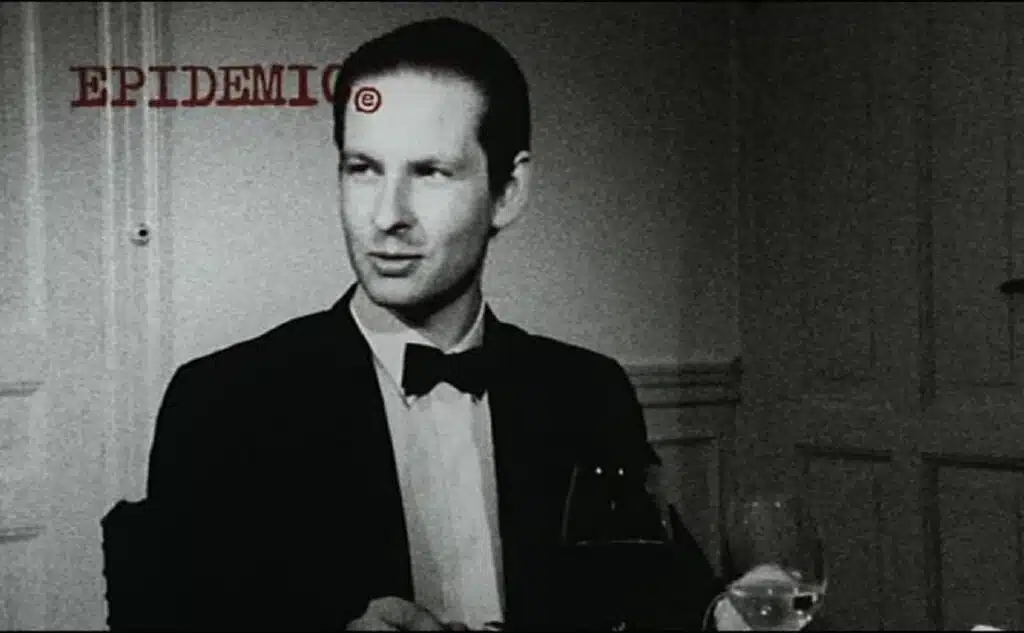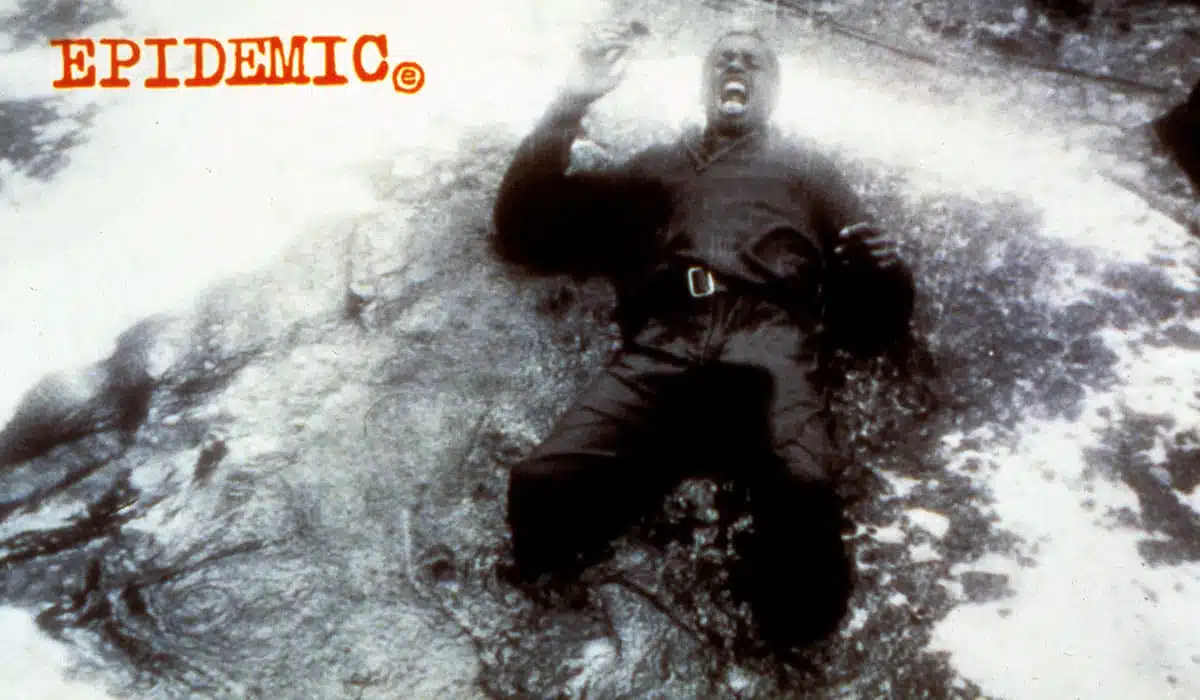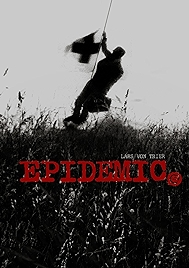Towards the end of Lars Von Trier’s second film, Epidemic, a film producer is handed a “finished” screenplay by Von Trier. It is only 12 pages long. “Is that it?” the producer asks, a hint of exasperation flickering across his face. Viewers of Epidemic may feel his pain.
To explain: in meta-film-making style, Epidemic is both the story of a doctor (played by Lars Von Trier) going against the wishes of the medical establishment and heading out into the world to fight a deadly epidemic, only to find that he himself is what’s spreading the disease. And it’s the story of the writing of the film itself – how two guys called Lars and Niels sit down to hammer out a follow-up to their previous film, which they call The Cop and the Whore. If you’ve seen it, you’ll know Von Trier and his writer Niels Vørsel are referring to The Element of Crime, their debut, which did indeed feature a cop and a whore. They both agree they didn’t like it much.
Von Trier shoots the background story in grainy 16mm, of the men researching the plague that swept through 14th-century Europe, of the men hunched over typewriters or talking about wine and girls in between hashing out scenarios. The “finished” film itself – of Dr Mesmer (as Von Trier’s character is called) on his saviour mission – is in 35mm, though anyone hoping for Hollywood production values, or even the lush visuals of The Element of Crime will be sorely disappointed. Periodically Von Trier fades up Wagner’s epically stirring Tannhäuser overture on the soundtrack, a bleak comment on the scrappiness of the visuals.

At one point the two men head to Germany, and visit the actor Udo Kier, who tells them the story of his birth in Cologne during a wartime bombing raid by the British that left both the newborn Udo and his mother buried in hospitial rubble. A true story, apparently. It functions as a kind of bizarre light relief.
Epidemic is the second of Von Trier’s Europe trilogy, a trio of films looking at the continent’s dark history (and future), hence the Black Death and the bombing of Cologne, and there’s a puckish spirit at work in it, one that borrows its apocalyptic looks from David Lynch’s Eraserhead and the oeuvre of Andrei Tarkovsky and operating self-consciously in Tarkovsky’s artist-as-shaman tradition.
It’s film as fanzine, the punkish hand-printed aesthetic also connecting us back to the Europe of woodblock printing presses and doctors with big beaky masks and nosegays to ward off the plague.
It’s a slog, in other words. Somewhat disingenuously, Von Trier has made the film to an extent critic-proof with his meta structure – the “No, it’s meant to be like that” defence offered up to the producer towards the film’s end in those 12 pages of screenplay.
But there is great audacity here too. Like the way Von Trier and Vørsel tie together the two stories at the end (the doctor and his epidemic, and the two men and their Epidemic) in a way that isn’t just breathtakingly smart but also dramatically just right.
Even so, the proportion of film film (the doctor and his plague) to chat about making a film is heavily in favour of the two guys just tooling around. There’s a half smile on Von Trier’s lips half the time in these sections, as if he’s asking us how much of this self-referentiality we’re really going to take before a mutiny is mooted below decks.
Ah, that’s just how it’s meant to be, he’d probably counter. Watch the bit, about halfway in, where Von Trier is drinking wine and wanging on about vineyards and vintages and going large on wine snobbery. Later there is talk about how fine truffles are.
Aren’t we just too much, too awful, he appears to be asking? “Yes!” seems a perfectly reasonable response.
Epidemic – Watch it/buy it at Amazon
I am an Amazon affiliate
© Steve Morrissey 2022

